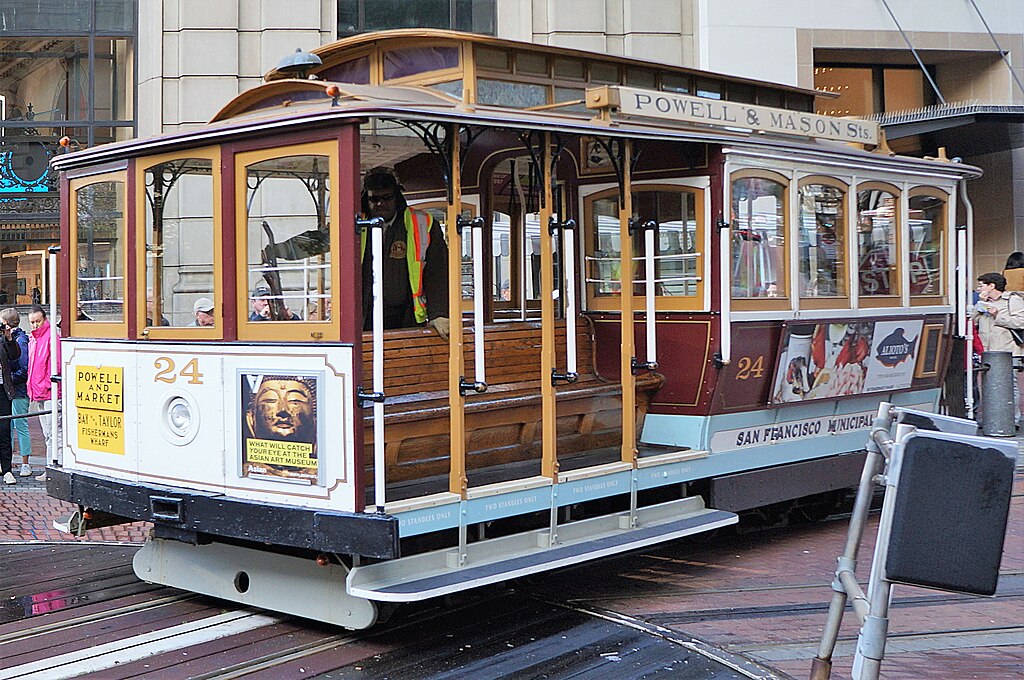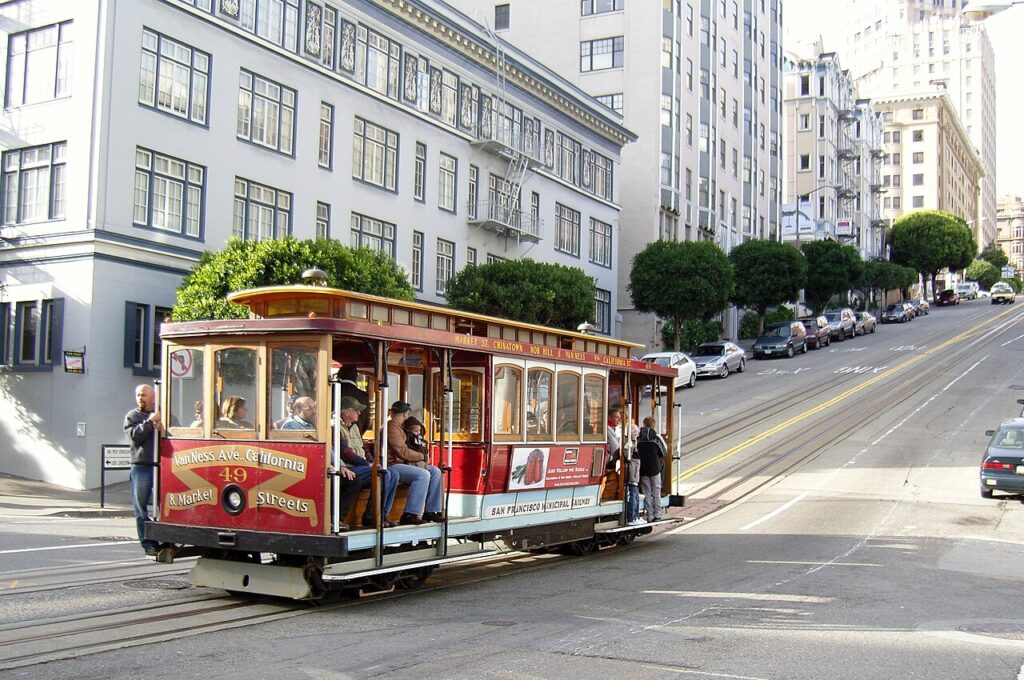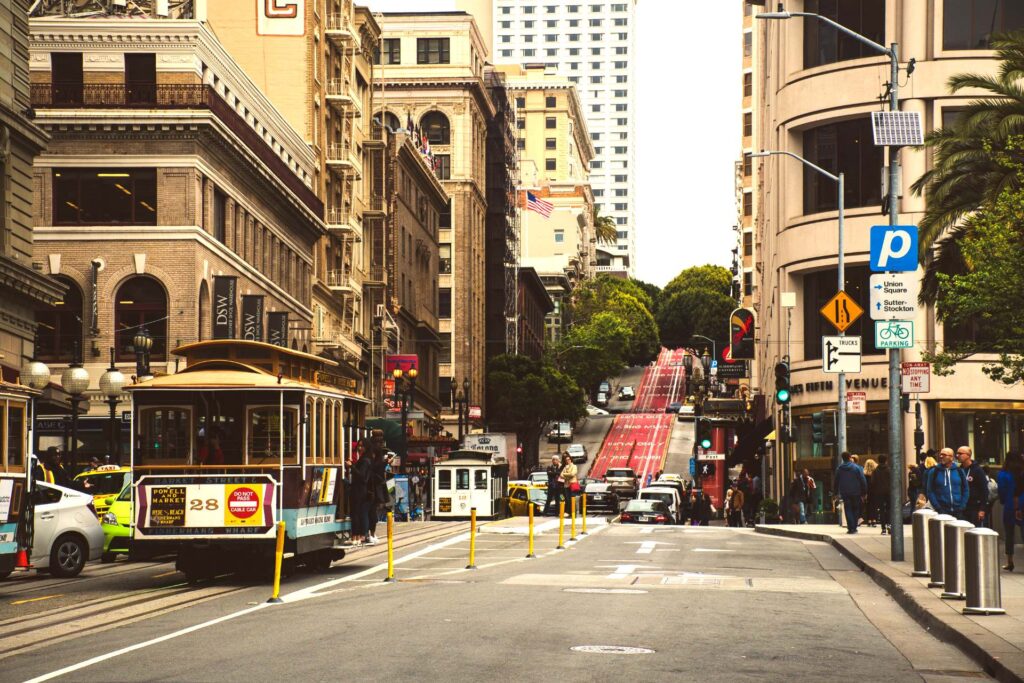CALL US! 1-415-851-9190
LetsGo@Lucky-Tuk-Tuk.com
San Francisco’s cable cars are more than just a tourist attraction; they are a moving piece of history, deeply woven into the city’s cultural fabric. From their groundbreaking origins to the quirky traditions that have kept them rolling for over a century, these beloved vehicles offer more than just a scenic ride. Here are 24 fascinating facts and unusual stories about San Francisco’s iconic cable cars.
The story of San Francisco’s cable cars begins with both tragedy and innovation. After witnessing a tragic accident where horses struggled to climb the city’s steep hills, inventor Andrew Smith Hallidie envisioned a safer, more efficient means of transportation. This led to the creation of the world’s first cable car system in 1873, revolutionizing public transit in urban settings. Despite challenges such as the 1906 earthquake and modernization efforts, cable cars have endured as a cherished symbol of San Francisco’s rich history.

San Francisco’s cable cars hold the unique distinction of being the only moving National Historic Landmarks, preserving history with every ride.
Cable cars travel at a leisurely pace of 9.5 MPH, allowing passengers to soak in breathtaking views of the city.
There are 40 cable cars in service today, including both single-ended and double-ended models, each with its own unique character.
Cable cars use three types of brakes, including the rare slot brake, ensuring a smooth and controlled descent down San Francisco’s famous hills.
The grip mechanism, operated by the gripman, allows the car to latch onto and release from the constantly moving cable beneath the street.
Originally powered by steam engines, the system transitioned to an electric powerhouse in the 1920s, maintaining its old-world charm with modern efficiency.
Each year, cable car operators compete in a bell-ringing contest, showcasing their skill and style to a cheering audience.
Visitors can explore the Cable Car Museum to see antique cars, historic exhibits, and even watch the underground cables in motion.
The only surviving car from the original Clay Street line remains a treasured relic of San Francisco’s past.
Originally, cable cars had separate grip and passenger cars. The combined design used today was introduced in 1883 for greater efficiency.
Each cable car carries its own history, from surviving the 1906 earthquake to featuring in Hollywood films and literature.
From Hollywood stars to city mayors, San Francisco’s cable cars have played host to countless famous passengers over the years.
Inspired by a tragic accident, Hallidie’s cable car system significantly reduced the risks posed by horse-drawn transportation on steep inclines.
Mona Hutchin made history in 1965 when she fought for and won the right for women to ride on the outside running boards.
Byron Cobb remains one of the most celebrated cable car bell-ringers, with six championship wins to his name.
Despite occasional fare hikes and controversies, cable cars continue to be a beloved part of San Francisco’s transit network.
Constructed from oak, Alaskan spruce, brass, and steel, cable cars are a testament to durable craftsmanship and timeless design.
Efforts to replace cable cars with overhead electric lines were met with strong opposition, preserving their unique operation.
In 1947, a campaign to shut down the cable cars was met with fierce public resistance, leading to a referendum that secured their future.
While cable car fares have increased over time, locals with a Muni pass can still ride without extra cost, blending history with daily commutes.
In 1998, Fannie Mae Barnes became the first woman to operate a cable car grip, shattering gender barriers in the industry.
Hallidie’s innovative endless rope design keeps the cable cars in constant motion, symbolizing the city’s never-ending energy.
After the 1906 earthquake, streetcars threatened to replace cable cars, but public demand ensured their continued operation.
With advancements in technology, discussions about making cable car rides cashless continue, signaling a new era for this historic mode of transport.

Becoming a San Francisco cable car operator, known as a gripman or gripwoman, is no easy feat. It requires rigorous training, exceptional physical strength, and an in-depth understanding of the historic cable car system.
Aspiring operators must first pass a competitive application process, which includes background checks, physical fitness evaluations, and knowledge of city transit rules. Given the physical demands, applicants must be able to pull and maneuver the 300-pound grip lever that controls the cable beneath the tracks.
The intensive training program lasts six to eight weeks and covers:
Trainees must pass a practical and written exam before earning their official operator status. Only the most skilled become grip operators, ensuring the legacy of San Francisco’s cable cars lives on with every ride.

San Francisco’s cable cars are more than just a mode of transportation; they are a rolling museum, a testament to human ingenuity, and an emblem of the city’s resilience. While our private San Francisco tour does not include a ride on the cable cars, we will visit all three cable car routes, see the famous cable car turnaround, and spot plenty of these historic vehicles along the way.
For the ultimate way to experience San Francisco’s charm, consider a private custom tour with Lucky Tuk Tuk. Let us take you through the city’s most iconic sights, including a thrilling look at the legendary cable cars.
Book your private San Francisco tour today and make history a part of your adventure!
Our goal is to provide 5-star service to our guests from around the world.
Got a question? Don’t hesitate to contact us. We’re passionate about planning the perfect Tuk Tuk tour for you.
